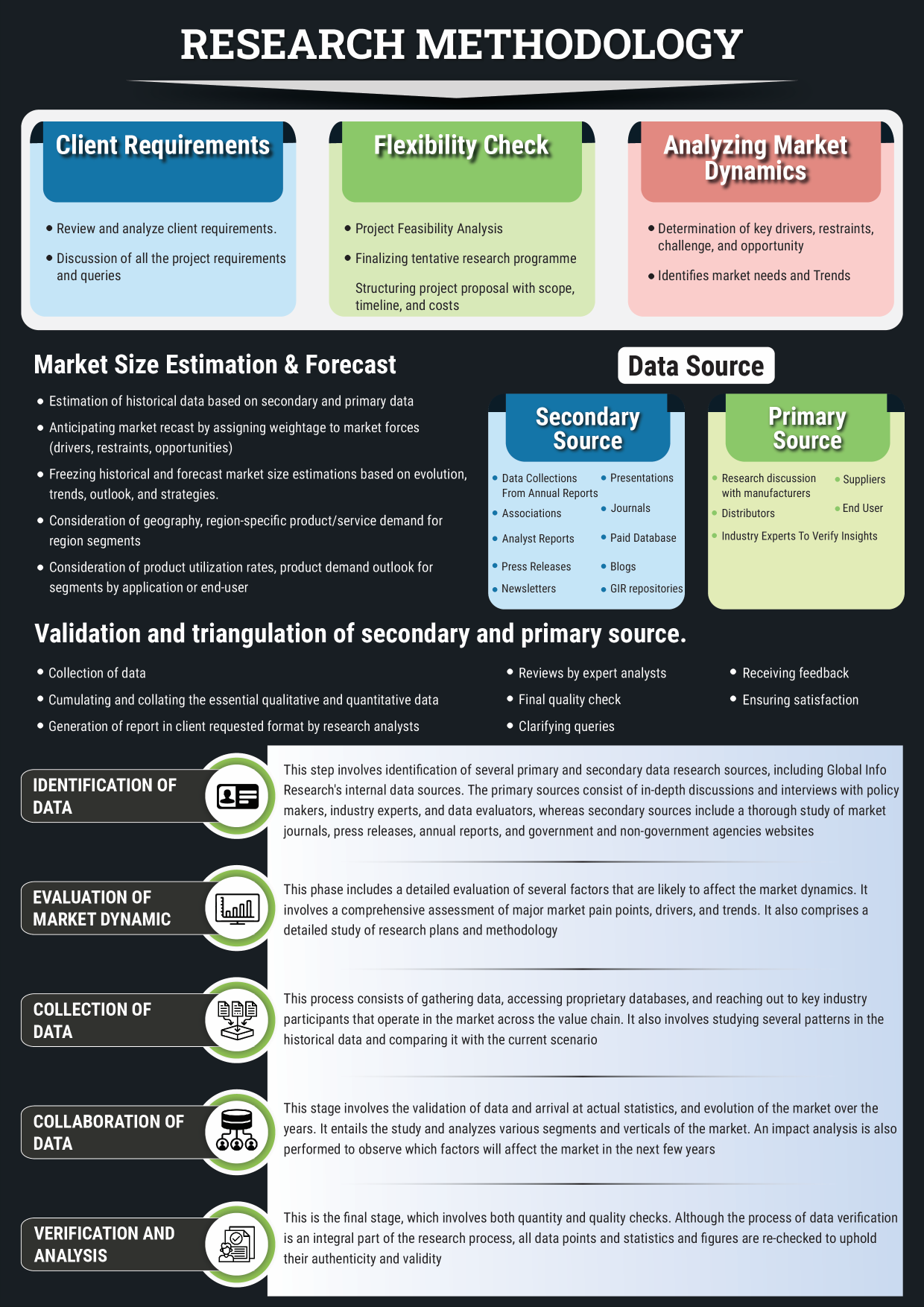Adhesives for Wearable Medical Device Market 2025: Comprehensive Analysis, Innovations, and Future Growth
The global market for adhesives used in wearable medical devices is gaining unprecedented momentum. Wearable medical devices—including glucose monitors, ECG sensors, and fitness trackers—have become essential tools in modern healthcare, offering continuous patient monitoring and improved health outcomes. However, the effectiveness of these devices depends heavily on the quality and performance of adhesives that secure them to the skin.
Adhesives for wearable medical devices are no longer just simple sticky materials; they play a critical role in ensuring device stability, user comfort, and accurate data collection. As the demand for wearable health technologies grows, so does the need for advanced adhesives that can adapt to complex skin conditions and varied patient needs. By 2025, this specialized adhesives market is projected to experience substantial growth fueled by technological advancements, rising chronic diseases, and evolving consumer preferences.
Market Drivers
Several powerful factors are propelling the adhesives for wearable medical devices market forward:
- Rising Prevalence of Chronic Diseases: The increasing number of patients with chronic conditions such as diabetes, cardiovascular diseases, and respiratory disorders is boosting the need for wearable monitoring devices. Adhesives that provide secure, long-lasting attachment are essential to these devices’ reliability.
- Growth in Telemedicine and Remote Patient Monitoring: The COVID-19 pandemic accelerated adoption of telehealth services, making wearable devices critical for remote healthcare delivery. Adhesives must maintain device adhesion during diverse activities to ensure uninterrupted patient data transmission.
- Patient Comfort and Safety: Modern consumers demand adhesives that are hypoallergenic, breathable, and water-resistant to avoid skin irritation and discomfort. The need for gentle yet effective adhesives has intensified, pushing manufacturers to innovate skin-friendly formulations.
- Stringent Regulatory Requirements: Biocompatibility and safety standards are increasingly enforced worldwide. Adhesive manufacturers must comply with strict guidelines to ensure their products are safe for prolonged skin contact, adding complexity and driving innovation.
Innovations Shaping the Market
Innovation is transforming how adhesives for wearable medical devices meet the rigorous demands of medical use and patient comfort.
- Advanced Skin-Friendly Adhesives: New formulations offer strong adhesion with minimal skin irritation, suitable even for patients with sensitive skin. These adhesives allow devices to be worn for extended periods, improving compliance and data accuracy.
- Flexible and Breathable Materials: Adhesives that stretch and breathe like natural skin reduce discomfort and prevent device detachment during movements like exercise or sleep. This flexibility is crucial for maintaining continuous monitoring.
- Smart Adhesive Technologies: Emerging “smart” adhesives can modulate their bonding strength based on factors such as sweat, temperature, and humidity. This dynamic response enhances device stability in changing environments.
- Sustainable and Eco-Friendly Adhesives: Growing environmental concerns have led to the development of biodegradable and environmentally safe adhesives, aligning with global sustainability goals in healthcare.
- Integration with Device Functionality: Innovative adhesives now contribute to improved device signal transmission and durability, highlighting their importance beyond just attachment.
Regional Market Dynamics
The growth and adoption of adhesives for wearable medical devices vary significantly across regions, influenced by healthcare infrastructure, regulatory environments, and consumer behavior.
- North America
North America dominates the market, driven by advanced healthcare infrastructure, a high prevalence of chronic diseases, and robust R&D activities. The region’s tech-savvy population and healthcare providers’ willingness to adopt novel technologies accelerate market growth. Additionally, regulatory bodies like the FDA maintain stringent safety standards that push innovation. - Europe
Europe’s market is characterized by strict regulatory frameworks emphasizing patient safety and product efficacy. The demand for hypoallergenic and biocompatible adhesives is high, with manufacturers investing in clinical trials and validations. Consumers’ preference for high-quality, reliable products sustains market expansion. - Asia-Pacific
Asia-Pacific is the fastest-growing market, propelled by increasing healthcare expenditure, rising awareness of wearable technology benefits, and expanding chronic disease incidence. Local manufacturers tailor adhesive products to diverse skin types and environmental conditions, enhancing adoption across varied demographics. - Emerging Markets
Regions such as Latin America and the Middle East are showing promising signs of growth, fueled by improving healthcare infrastructure and rising interest in remote monitoring. However, challenges related to cost sensitivity and regulatory complexity remain.
Strategic Considerations for Market Players
To capture opportunities in this evolving market, companies should consider the following strategies:
- Invest in Research & Development: Continuous innovation is vital to creating adhesives that meet diverse patient needs, environmental challenges, and regulatory demands. R&D can focus on developing skin-safe, long-lasting, and environmentally sustainable adhesives.
- Collaborate with Device Manufacturers: Close cooperation ensures adhesives are perfectly integrated with wearable devices, optimizing performance, comfort, and durability.
- Navigate Global Regulatory Landscapes: Understanding and complying with regional standards is crucial for timely market access and building customer trust.
- Focus on Sustainability: Developing biodegradable and eco-conscious adhesives can differentiate brands in a market increasingly concerned with environmental impact.
- Educate Healthcare Providers and Patients: Clear communication about adhesive benefits and usage promotes adoption, ensuring better patient outcomes and device efficacy.
Conclusion
The adhesives market for wearable medical devices is a vital yet often underestimated segment of the healthcare technology ecosystem. With the surge in wearable device adoption driven by chronic disease management, telehealth expansion, and patient-centric care, adhesives that provide secure, comfortable, and skin-friendly solutions will be in high demand by 2025.
Regional market variations offer diverse opportunities, with North America and Europe leading innovation and regulatory compliance, and Asia-Pacific rapidly emerging as a key growth engine. Strategic investments in research, partnerships, regulatory expertise, and sustainability initiatives will be critical for market players aiming to capitalize on this promising landscape.
As wearable medical technology continues to evolve, adhesives will remain a foundational component that ensures these life-enhancing devices perform reliably and comfortably, ultimately improving patient care worldwide.
NOTE:
Quants and Trends is proud to offer an extensive portfolio of meticulously researched healthcare market reports, numbering in the thousands. We also provide tailored customization services to ensure our insights align precisely with your strategic objectives and informational needs. For personalized assistance or to discuss your specific requirements, we invite you to get in touch with our team. We also encourage you to request a complimentary sample PDF report. Please visit our Sample Request Page to receive yours today.
Key Market Players
3M
Dow
Scapa Group
H.B. Fuller
Adhesives Research
Henkel
Vancive Medical Technologies
Lohmann
Elkem Silicones
Polymer Science, Inc.
Adhezion Biomedical
Segmentation By Type
Acrylics Based
Silicone Based
Others
Segmentation By Application
Diagnostic Device
Monitoring Device
Drug Delivery Devices
Segmentation By Region
North America (United States, Canada, and Mexico)
Europe (Germany, France, UK, Russia, Italy, and Rest of Europe)
Asia-Pacific (China, Japan, South Korea, India, Southeast Asia, Australia and Rest of Asia-Pacific)
South America (Brazil, Argentina and Rest of South America)
Middle East & Africa (Turkey, Saudi Arabia, UAE, Rest of Middle East & Africa)
Market SWOT Analysis
What are the strengths of adhesives in the wearable medical device market in 2025?
The adhesives used in wearable medical devices are designed for biocompatibility, ensuring safe skin contact and minimizing allergic reactions. They also offer excellent bonding properties, enhancing the durability and reliability of devices in dynamic environments. Additionally, advancements in adhesive technology allow for improved flexibility and comfort, making the devices more user-friendly.
What are the weaknesses of adhesives in this market?
One significant weakness is the potential for adhesive degradation over time, especially under varying environmental conditions, which can lead to device failure. Some adhesives may also have limited performance in extreme temperatures or humidity levels. Furthermore, the manufacturing process for these adhesives can be complex and costly, impacting overall market pricing.
What opportunities exist for adhesives in the wearable medical device market?
The growing demand for remote patient monitoring and health-tracking devices presents significant opportunities for adhesive manufacturers. Innovations in smart materials, such as self-healing or biosensing adhesives, can create new product lines. Additionally, partnerships with device manufacturers can lead to tailored solutions that enhance device performance and user satisfaction.
What threats does the adhesive market face in 2025?
Intense competition from alternative fastening methods, such as mechanical connectors or advanced coatings, poses a threat to adhesive adoption. Regulatory challenges related to safety and efficacy can hinder product development and market entry. Moreover, the rapid pace of technological advancement in wearable devices may outstrip the capabilities of current adhesive formulations, necessitating continuous innovation.
Market PESTEL Analysis
How do political factors influence the adhesives market for wearable medical devices in 2025?
Government regulations on medical adhesives, including safety and biocompatibility standards, play a crucial role in shaping the market. Trade policies and international supply chain disruptions may impact raw material availability. Additionally, funding for healthcare innovation can drive research into advanced adhesive solutions.
What economic factors affect this market?
The rising healthcare expenditure and growing investment in wearable technology fuel market growth. However, fluctuations in raw material prices and production costs can impact profit margins. Economic downturns or inflation may also affect consumer purchasing power and slow adoption rates.
How do social factors impact the demand for adhesives in wearable medical devices?
An aging population and the increasing prevalence of chronic diseases drive the need for continuous health monitoring, boosting demand for wearables. Consumer preference for comfortable, long-lasting, and skin-friendly adhesives influences product innovation. Additionally, awareness of skin sensitivities and allergic reactions shapes formulation strategies.
What technological trends influence this market?
Advancements in adhesive chemistry, such as skin-friendly, breathable, and sweat-resistant formulations, enhance device performance. The integration of biosensors into adhesives enables real-time health monitoring. Additionally, the development of eco-friendly and biodegradable adhesives aligns with sustainability trends.
How do environmental factors affect the adhesive industry for medical wearables?
Sustainability concerns push manufacturers toward eco-friendly and non-toxic adhesive formulations. The environmental impact of production processes, including emissions and waste disposal, is under scrutiny. Climate factors like humidity and temperature variations also drive innovation in adhesive durability.
What legal aspects shape the market for medical adhesives?
Strict regulatory approvals, such as FDA and EU MDR compliance, ensure product safety and efficacy. Intellectual property laws influence competition by protecting adhesive formulations. Additionally, data privacy regulations impact the integration of adhesives with smart medical devices that collect patient health data.
Market SIPOC Analysis
Who are the key suppliers in the adhesives market for wearable medical devices in 2025?
Raw material suppliers provide essential components such as polymers, resins, and additives for adhesive formulation. Chemical manufacturers develop specialized adhesives tailored for medical applications. Equipment suppliers contribute to the production and quality control processes, ensuring consistency and safety.
What are the main inputs in the adhesive manufacturing process?
The primary inputs include biocompatible raw materials, solvents, and curing agents that determine adhesive properties. Regulatory compliance requirements guide formulation and production standards. Advanced testing methods ensure product safety, durability, and skin compatibility.
What processes are involved in manufacturing adhesives for wearable medical devices?
The process begins with formulation development, where raw materials are combined to achieve desired properties. This is followed by rigorous testing for adhesion strength, flexibility, and skin compatibility. The final stage involves large-scale production, quality assurance, and packaging for distribution.
Who are the key outputs of the adhesive market?
The main outputs include high-performance medical-grade adhesives designed for long wear and patient comfort. Specialized adhesive films and patches are developed for integration with wearable devices. Regulatory-approved products ensure compliance with safety and industry standards.
Who are the primary customers of adhesives for wearable medical devices?
Medical device manufacturers rely on adhesives to enhance product functionality and durability. Healthcare providers and hospitals use wearable devices with adhesives for remote patient monitoring. End-users, including patients and consumers, seek skin-friendly and long-lasting adhesive solutions for daily wear.
Market Porter's Five Forces
How strong is the competitive rivalry in the adhesives market for wearable medical devices in 2025?
The market is highly competitive, with numerous established players and new entrants focusing on innovation. Companies differentiate through advanced formulations, biocompatibility, and durability. Price competition and regulatory compliance also drive market dynamics.
What is the threat of new entrants in this market?
The high cost of research, stringent regulatory requirements, and the need for specialized expertise create barriers to entry. However, technological advancements and demand for sustainable adhesives may encourage new players to enter with niche solutions.
How significant is the bargaining power of suppliers?
Suppliers of raw materials like polymers and specialty chemicals hold moderate bargaining power due to limited high-quality sources. Dependence on key suppliers for biocompatible and medical-grade adhesives can impact pricing and availability.
What is the bargaining power of buyers in this industry?
Medical device manufacturers and healthcare providers have strong bargaining power due to the availability of multiple adhesive options. Buyers prioritize reliability, safety, and cost-effectiveness, pushing suppliers to offer high-quality and innovative solutions.
What is the threat of substitutes for medical adhesives?
Alternatives such as mechanical fasteners, hydrogel-based adhesives, and advanced skin-compatible tapes pose a moderate threat. However, adhesives offer superior flexibility, comfort, and seamless integration with wearable devices, maintaining their market dominance.
Market Upstream Analysis
What are the key raw materials used in adhesives for wearable medical devices in 2025?
The primary raw materials include medical-grade polymers, resins, and pressure-sensitive adhesives designed for skin contact. Additional components such as curing agents, solvents, and stabilizers enhance adhesion strength and durability. Biocompatible and hypoallergenic materials are essential for patient safety.
Who are the main suppliers in the upstream supply chain?
Raw material suppliers include chemical manufacturers specializing in medical-grade adhesives. Polymer producers provide essential base materials, while specialty chemical companies supply additives to improve flexibility and longevity. Equipment suppliers support the production process with precision mixing and coating technologies.
What challenges affect the upstream supply chain of medical adhesives?
Fluctuations in raw material costs impact production expenses and pricing. Supply chain disruptions, such as shortages of specialty chemicals or geopolitical trade restrictions, can delay manufacturing. Regulatory requirements for medical-grade materials add complexity to sourcing and compliance.
How does technological advancement influence the upstream market?
Innovations in polymer science and nanotechnology lead to the development of stronger, more breathable, and skin-friendly adhesives. Automation and AI-driven quality control improve material consistency and production efficiency. Sustainable and biodegradable adhesive materials are gaining traction to meet environmental regulations.
What strategies can manufacturers adopt to strengthen their upstream supply chain?
Diversifying supplier networks reduces dependency on a single source and minimizes disruptions. Investing in in-house R&D allows for the creation of proprietary adhesive formulations. Strategic partnerships with raw material providers ensure a stable supply of high-quality medical-grade adhesives.
Market Midstream Analysis
What are the key processes involved in the midstream stage of adhesives for wearable medical devices in 2025?
The midstream stage involves adhesive formulation, where raw materials are blended to achieve optimal performance. This is followed by precision coating onto medical tapes or films, ensuring uniform thickness and durability. Quality control testing, including adhesion strength, biocompatibility, and environmental resistance, ensures regulatory compliance.
Who are the major players in the midstream segment?
Adhesive manufacturers specializing in medical applications play a crucial role. Contract manufacturers assist in large-scale production and customization for device makers. Research and development teams work on improving adhesive properties such as breathability, flexibility, and extended wear time.
What challenges impact the midstream supply chain?
Strict regulatory requirements demand rigorous testing and certification, increasing production time and costs. Maintaining consistency in adhesive quality across different production batches is critical but challenging. Market competition drives continuous innovation, requiring investment in R&D and advanced manufacturing techniques.
How does technology influence the midstream stage?
Automation in mixing and coating processes enhances efficiency and precision. Smart adhesives with biosensing capabilities are emerging, integrating health monitoring features. AI-driven quality control systems improve defect detection and ensure compliance with medical-grade standards.
What strategies can manufacturers use to optimize midstream processes?
Adopting lean manufacturing practices minimizes waste and improves efficiency. Investing in high-precision coating and curing technologies ensures product reliability. Collaborating with wearable device manufacturers allows for co-development of adhesives tailored to specific medical applications.
Market Downstream Analysis
Who are the key customers in the downstream segment of the adhesives market for wearable medical devices in 2025?
Medical device manufacturers are the primary customers, integrating adhesives into wearables for secure attachment to the skin. Healthcare providers and hospitals use these devices for patient monitoring and chronic disease management. End-users, including patients and consumers, seek comfortable and long-lasting adhesives for everyday use.
What factors influence customer demand in the downstream market?
The growing adoption of remote patient monitoring and wearable health technology drives demand for high-performance adhesives. Consumers prioritize adhesives that offer skin-friendliness, durability, and resistance to sweat and moisture. Regulatory approvals and compliance with medical safety standards also influence purchasing decisions.
What challenges exist in the downstream supply chain?
Delays in regulatory approvals can slow the commercialization of new adhesive products. Intense competition among suppliers pressures manufacturers to provide cost-effective yet high-quality solutions. Variability in consumer preferences and skin sensitivities requires continuous innovation and customization.
How does technology impact the downstream market?
Advancements in adhesive formulations improve wear time, comfort, and breathability. Smart adhesives with biosensing capabilities enhance real-time health tracking. Digital platforms enable direct-to-consumer sales, increasing accessibility and expanding market reach.
What strategies can strengthen the downstream supply chain?
Building strong partnerships with medical device manufacturers ensures seamless integration of adhesives into wearable products. Enhancing customer education on proper adhesive use and skin safety fosters brand loyalty. Leveraging e-commerce and distribution networks improves market penetration and accessibility.
Chapter 1, to describe Adhesives for Wearable Medical Device product scope, market overview, market estimation caveats and base year.
Chapter 2, to profile the top players of Adhesives for Wearable Medical Device, with revenue, gross margin and global market share of Adhesives for Wearable Medical Device from 2018 to 2023.
Chapter 3, the Adhesives for Wearable Medical Device competitive situation, revenue and global market share of top players are analyzed emphatically by landscape contrast.
Chapter 4 and 5, to segment the market size by Type and application, with consumption value and growth rate by Type, application, from 2018 to 2029.
Chapter 6, 7, 8, 9, and 10, to break the market size data at the country level, with revenue and market share for key countries in the world, from 2018 to 2023.and Adhesives for Wearable Medical Device market forecast, by regions, type and application, with consumption value, from 2024 to 2029.
Chapter 11, market dynamics, drivers, restraints, trends, Porters Five Forces analysis, and Influence of COVID-19 and Russia-Ukraine War
Chapter 12, the key raw materials and key suppliers, and industry chain of Adhesives for Wearable Medical Device.
Chapter 13, to describe Adhesives for Wearable Medical Device research findings and conclusion.
1 Market Overview
1.1 Product Overview and Scope of Adhesives for Wearable Medical Device
1.2 Market Estimation Caveats and Base Year
1.3 Classification of Adhesives for Wearable Medical Device by Type
1.3.1 Overview: Global Adhesives for Wearable Medical Device Market Size by Type: 2018 Versus 2022 Versus 2029
1.3.2 Global Adhesives for Wearable Medical Device Consumption Value Market Share by Type in 2022
1.3.3 Acrylics Based
1.3.4 Silicone Based
1.3.5 Others
1.4 Global Adhesives for Wearable Medical Device Market by Application
1.4.1 Overview: Global Adhesives for Wearable Medical Device Market Size by Application: 2018 Versus 2022 Versus 2029
1.4.2 Diagnostic Device
1.4.3 Monitoring Device
1.4.4 Drug Delivery Devices
1.5 Global Adhesives for Wearable Medical Device Market Size & Forecast
1.6 Global Adhesives for Wearable Medical Device Market Size and Forecast by Region
1.6.1 Global Adhesives for Wearable Medical Device Market Size by Region: 2018 VS 2022 VS 2029
1.6.2 Global Adhesives for Wearable Medical Device Market Size by Region, (2018-2029)
1.6.3 North America Adhesives for Wearable Medical Device Market Size and Prospect (2018-2029)
1.6.4 Europe Adhesives for Wearable Medical Device Market Size and Prospect (2018-2029)
1.6.5 Asia-Pacific Adhesives for Wearable Medical Device Market Size and Prospect (2018-2029)
1.6.6 South America Adhesives for Wearable Medical Device Market Size and Prospect (2018-2029)
1.6.7 Middle East and Africa Adhesives for Wearable Medical Device Market Size and Prospect (2018-2029)
2 Company Profiles
2.1 3M
2.1.1 3M Details
2.1.2 3M Major Business
2.1.3 3M Adhesives for Wearable Medical Device Product and Solutions
2.1.4 3M Adhesives for Wearable Medical Device Revenue, Gross Margin and Market Share (2018-2023)
2.1.5 3M Recent Developments and Future Plans
2.2 Dow
2.2.1 Dow Details
2.2.2 Dow Major Business
2.2.3 Dow Adhesives for Wearable Medical Device Product and Solutions
2.2.4 Dow Adhesives for Wearable Medical Device Revenue, Gross Margin and Market Share (2018-2023)
2.2.5 Dow Recent Developments and Future Plans
2.3 Scapa Group
2.3.1 Scapa Group Details
2.3.2 Scapa Group Major Business
2.3.3 Scapa Group Adhesives for Wearable Medical Device Product and Solutions
2.3.4 Scapa Group Adhesives for Wearable Medical Device Revenue, Gross Margin and Market Share (2018-2023)
2.3.5 Scapa Group Recent Developments and Future Plans
2.4 H.B. Fuller
2.4.1 H.B. Fuller Details
2.4.2 H.B. Fuller Major Business
2.4.3 H.B. Fuller Adhesives for Wearable Medical Device Product and Solutions
2.4.4 H.B. Fuller Adhesives for Wearable Medical Device Revenue, Gross Margin and Market Share (2018-2023)
2.4.5 H.B. Fuller Recent Developments and Future Plans
2.5 Adhesives Research
2.5.1 Adhesives Research Details
2.5.2 Adhesives Research Major Business
2.5.3 Adhesives Research Adhesives for Wearable Medical Device Product and Solutions
2.5.4 Adhesives Research Adhesives for Wearable Medical Device Revenue, Gross Margin and Market Share (2018-2023)
2.5.5 Adhesives Research Recent Developments and Future Plans
2.6 Henkel
2.6.1 Henkel Details
2.6.2 Henkel Major Business
2.6.3 Henkel Adhesives for Wearable Medical Device Product and Solutions
2.6.4 Henkel Adhesives for Wearable Medical Device Revenue, Gross Margin and Market Share (2018-2023)
2.6.5 Henkel Recent Developments and Future Plans
2.7 Vancive Medical Technologies
2.7.1 Vancive Medical Technologies Details
2.7.2 Vancive Medical Technologies Major Business
2.7.3 Vancive Medical Technologies Adhesives for Wearable Medical Device Product and Solutions
2.7.4 Vancive Medical Technologies Adhesives for Wearable Medical Device Revenue, Gross Margin and Market Share (2018-2023)
2.7.5 Vancive Medical Technologies Recent Developments and Future Plans
2.8 Lohmann
2.8.1 Lohmann Details
2.8.2 Lohmann Major Business
2.8.3 Lohmann Adhesives for Wearable Medical Device Product and Solutions
2.8.4 Lohmann Adhesives for Wearable Medical Device Revenue, Gross Margin and Market Share (2018-2023)
2.8.5 Lohmann Recent Developments and Future Plans
2.9 Elkem Silicones
2.9.1 Elkem Silicones Details
2.9.2 Elkem Silicones Major Business
2.9.3 Elkem Silicones Adhesives for Wearable Medical Device Product and Solutions
2.9.4 Elkem Silicones Adhesives for Wearable Medical Device Revenue, Gross Margin and Market Share (2018-2023)
2.9.5 Elkem Silicones Recent Developments and Future Plans
2.10 Polymer Science, Inc.
2.10.1 Polymer Science, Inc. Details
2.10.2 Polymer Science, Inc. Major Business
2.10.3 Polymer Science, Inc. Adhesives for Wearable Medical Device Product and Solutions
2.10.4 Polymer Science, Inc. Adhesives for Wearable Medical Device Revenue, Gross Margin and Market Share (2018-2023)
2.10.5 Polymer Science, Inc. Recent Developments and Future Plans
2.11 Adhezion Biomedical
2.11.1 Adhezion Biomedical Details
2.11.2 Adhezion Biomedical Major Business
2.11.3 Adhezion Biomedical Adhesives for Wearable Medical Device Product and Solutions
2.11.4 Adhezion Biomedical Adhesives for Wearable Medical Device Revenue, Gross Margin and Market Share (2018-2023)
2.11.5 Adhezion Biomedical Recent Developments and Future Plans
3 Market Competition, by Players
3.1 Global Adhesives for Wearable Medical Device Revenue and Share by Players (2018-2023)
3.2 Market Share Analysis (2022)
3.2.1 Market Share of Adhesives for Wearable Medical Device by Company Revenue
3.2.2 Top 3 Adhesives for Wearable Medical Device Players Market Share in 2022
3.2.3 Top 6 Adhesives for Wearable Medical Device Players Market Share in 2022
3.3 Adhesives for Wearable Medical Device Market: Overall Company Footprint Analysis
3.3.1 Adhesives for Wearable Medical Device Market: Region Footprint
3.3.2 Adhesives for Wearable Medical Device Market: Company Product Type Footprint
3.3.3 Adhesives for Wearable Medical Device Market: Company Product Application Footprint
3.4 New Market Entrants and Barriers to Market Entry
3.5 Mergers, Acquisition, Agreements, and Collaborations
4 Market Size Segment by Type
4.1 Global Adhesives for Wearable Medical Device Consumption Value and Market Share by Type (2018-2023)
4.2 Global Adhesives for Wearable Medical Device Market Forecast by Type (2024-2029)
5 Market Size Segment by Application
5.1 Global Adhesives for Wearable Medical Device Consumption Value Market Share by Application (2018-2023)
5.2 Global Adhesives for Wearable Medical Device Market Forecast by Application (2024-2029)
6 North America
6.1 North America Adhesives for Wearable Medical Device Consumption Value by Type (2018-2029)
6.2 North America Adhesives for Wearable Medical Device Consumption Value by Application (2018-2029)
6.3 North America Adhesives for Wearable Medical Device Market Size by Country
6.3.1 North America Adhesives for Wearable Medical Device Consumption Value by Country (2018-2029)
6.3.2 United States Adhesives for Wearable Medical Device Market Size and Forecast (2018-2029)
6.3.3 Canada Adhesives for Wearable Medical Device Market Size and Forecast (2018-2029)
6.3.4 Mexico Adhesives for Wearable Medical Device Market Size and Forecast (2018-2029)
7 Europe
7.1 Europe Adhesives for Wearable Medical Device Consumption Value by Type (2018-2029)
7.2 Europe Adhesives for Wearable Medical Device Consumption Value by Application (2018-2029)
7.3 Europe Adhesives for Wearable Medical Device Market Size by Country
7.3.1 Europe Adhesives for Wearable Medical Device Consumption Value by Country (2018-2029)
7.3.2 Germany Adhesives for Wearable Medical Device Market Size and Forecast (2018-2029)
7.3.3 France Adhesives for Wearable Medical Device Market Size and Forecast (2018-2029)
7.3.4 United Kingdom Adhesives for Wearable Medical Device Market Size and Forecast (2018-2029)
7.3.5 Russia Adhesives for Wearable Medical Device Market Size and Forecast (2018-2029)
7.3.6 Italy Adhesives for Wearable Medical Device Market Size and Forecast (2018-2029)
8 Asia-Pacific
8.1 Asia-Pacific Adhesives for Wearable Medical Device Consumption Value by Type (2018-2029)
8.2 Asia-Pacific Adhesives for Wearable Medical Device Consumption Value by Application (2018-2029)
8.3 Asia-Pacific Adhesives for Wearable Medical Device Market Size by Region
8.3.1 Asia-Pacific Adhesives for Wearable Medical Device Consumption Value by Region (2018-2029)
8.3.2 China Adhesives for Wearable Medical Device Market Size and Forecast (2018-2029)
8.3.3 Japan Adhesives for Wearable Medical Device Market Size and Forecast (2018-2029)
8.3.4 South Korea Adhesives for Wearable Medical Device Market Size and Forecast (2018-2029)
8.3.5 India Adhesives for Wearable Medical Device Market Size and Forecast (2018-2029)
8.3.6 Southeast Asia Adhesives for Wearable Medical Device Market Size and Forecast (2018-2029)
8.3.7 Australia Adhesives for Wearable Medical Device Market Size and Forecast (2018-2029)
9 South America
9.1 South America Adhesives for Wearable Medical Device Consumption Value by Type (2018-2029)
9.2 South America Adhesives for Wearable Medical Device Consumption Value by Application (2018-2029)
9.3 South America Adhesives for Wearable Medical Device Market Size by Country
9.3.1 South America Adhesives for Wearable Medical Device Consumption Value by Country (2018-2029)
9.3.2 Brazil Adhesives for Wearable Medical Device Market Size and Forecast (2018-2029)
9.3.3 Argentina Adhesives for Wearable Medical Device Market Size and Forecast (2018-2029)
10 Middle East & Africa
10.1 Middle East & Africa Adhesives for Wearable Medical Device Consumption Value by Type (2018-2029)
10.2 Middle East & Africa Adhesives for Wearable Medical Device Consumption Value by Application (2018-2029)
10.3 Middle East & Africa Adhesives for Wearable Medical Device Market Size by Country
10.3.1 Middle East & Africa Adhesives for Wearable Medical Device Consumption Value by Country (2018-2029)
10.3.2 Turkey Adhesives for Wearable Medical Device Market Size and Forecast (2018-2029)
10.3.3 Saudi Arabia Adhesives for Wearable Medical Device Market Size and Forecast (2018-2029)
10.3.4 UAE Adhesives for Wearable Medical Device Market Size and Forecast (2018-2029)
11 Market Dynamics
11.1 Adhesives for Wearable Medical Device Market Drivers
11.2 Adhesives for Wearable Medical Device Market Restraints
11.3 Adhesives for Wearable Medical Device Trends Analysis
11.4 Porters Five Forces Analysis
11.4.1 Threat of New Entrants
11.4.2 Bargaining Power of Suppliers
11.4.3 Bargaining Power of Buyers
11.4.4 Threat of Substitutes
11.4.5 Competitive Rivalry
11.5 Influence of COVID-19 and Russia-Ukraine War
11.5.1 Influence of COVID-19
11.5.2 Influence of Russia-Ukraine War
12 Industry Chain Analysis
12.1 Adhesives for Wearable Medical Device Industry Chain
12.2 Adhesives for Wearable Medical Device Upstream Analysis
12.3 Adhesives for Wearable Medical Device Midstream Analysis
12.4 Adhesives for Wearable Medical Device Downstream Analysis
13 Research Findings and Conclusion
14 Appendix
14.1 Methodology
14.2 Research Process and Data Source
14.3 Disclaimer
List of Tables
Table 1. Global Adhesives for Wearable Medical Device Consumption Value by Type, (USD Million), 2018 & 2022 & 2029
Table 2. Global Adhesives for Wearable Medical Device Consumption Value by Application, (USD Million), 2018 & 2022 & 2029
Table 3. Global Adhesives for Wearable Medical Device Consumption Value by Region (2018-2023) & (USD Million)
Table 4. Global Adhesives for Wearable Medical Device Consumption Value by Region (2024-2029) & (USD Million)
Table 5. 3M Company Information, Head Office, and Major Competitors
Table 6. 3M Major Business
Table 7. 3M Adhesives for Wearable Medical Device Product and Solutions
Table 8. 3M Adhesives for Wearable Medical Device Revenue (USD Million), Gross Margin and Market Share (2018-2023)
Table 9. 3M Recent Developments and Future Plans
Table 10. Dow Company Information, Head Office, and Major Competitors
Table 11. Dow Major Business
Table 12. Dow Adhesives for Wearable Medical Device Product and Solutions
Table 13. Dow Adhesives for Wearable Medical Device Revenue (USD Million), Gross Margin and Market Share (2018-2023)
Table 14. Dow Recent Developments and Future Plans
Table 15. Scapa Group Company Information, Head Office, and Major Competitors
Table 16. Scapa Group Major Business
Table 17. Scapa Group Adhesives for Wearable Medical Device Product and Solutions
Table 18. Scapa Group Adhesives for Wearable Medical Device Revenue (USD Million), Gross Margin and Market Share (2018-2023)
Table 19. Scapa Group Recent Developments and Future Plans
Table 20. H.B. Fuller Company Information, Head Office, and Major Competitors
Table 21. H.B. Fuller Major Business
Table 22. H.B. Fuller Adhesives for Wearable Medical Device Product and Solutions
Table 23. H.B. Fuller Adhesives for Wearable Medical Device Revenue (USD Million), Gross Margin and Market Share (2018-2023)
Table 24. H.B. Fuller Recent Developments and Future Plans
Table 25. Adhesives Research Company Information, Head Office, and Major Competitors
Table 26. Adhesives Research Major Business
Table 27. Adhesives Research Adhesives for Wearable Medical Device Product and Solutions
Table 28. Adhesives Research Adhesives for Wearable Medical Device Revenue (USD Million), Gross Margin and Market Share (2018-2023)
Table 29. Adhesives Research Recent Developments and Future Plans
Table 30. Henkel Company Information, Head Office, and Major Competitors
Table 31. Henkel Major Business
Table 32. Henkel Adhesives for Wearable Medical Device Product and Solutions
Table 33. Henkel Adhesives for Wearable Medical Device Revenue (USD Million), Gross Margin and Market Share (2018-2023)
Table 34. Henkel Recent Developments and Future Plans
Table 35. Vancive Medical Technologies Company Information, Head Office, and Major Competitors
Table 36. Vancive Medical Technologies Major Business
Table 37. Vancive Medical Technologies Adhesives for Wearable Medical Device Product and Solutions
Table 38. Vancive Medical Technologies Adhesives for Wearable Medical Device Revenue (USD Million), Gross Margin and Market Share (2018-2023)
Table 39. Vancive Medical Technologies Recent Developments and Future Plans
Table 40. Lohmann Company Information, Head Office, and Major Competitors
Table 41. Lohmann Major Business
Table 42. Lohmann Adhesives for Wearable Medical Device Product and Solutions
Table 43. Lohmann Adhesives for Wearable Medical Device Revenue (USD Million), Gross Margin and Market Share (2018-2023)
Table 44. Lohmann Recent Developments and Future Plans
Table 45. Elkem Silicones Company Information, Head Office, and Major Competitors
Table 46. Elkem Silicones Major Business
Table 47. Elkem Silicones Adhesives for Wearable Medical Device Product and Solutions
Table 48. Elkem Silicones Adhesives for Wearable Medical Device Revenue (USD Million), Gross Margin and Market Share (2018-2023)
Table 49. Elkem Silicones Recent Developments and Future Plans
Table 50. Polymer Science, Inc. Company Information, Head Office, and Major Competitors
Table 51. Polymer Science, Inc. Major Business
Table 52. Polymer Science, Inc. Adhesives for Wearable Medical Device Product and Solutions
Table 53. Polymer Science, Inc. Adhesives for Wearable Medical Device Revenue (USD Million), Gross Margin and Market Share (2018-2023)
Table 54. Polymer Science, Inc. Recent Developments and Future Plans
Table 55. Adhezion Biomedical Company Information, Head Office, and Major Competitors
Table 56. Adhezion Biomedical Major Business
Table 57. Adhezion Biomedical Adhesives for Wearable Medical Device Product and Solutions
Table 58. Adhezion Biomedical Adhesives for Wearable Medical Device Revenue (USD Million), Gross Margin and Market Share (2018-2023)
Table 59. Adhezion Biomedical Recent Developments and Future Plans
Table 60. Global Adhesives for Wearable Medical Device Revenue (USD Million) by Players (2018-2023)
Table 61. Global Adhesives for Wearable Medical Device Revenue Share by Players (2018-2023)
Table 62. Breakdown of Adhesives for Wearable Medical Device by Company Type (Tier 1, Tier 2, and Tier 3)
Table 63. Market Position of Players in Adhesives for Wearable Medical Device, (Tier 1, Tier 2, and Tier 3), Based on Revenue in 2022
Table 64. Head Office of Key Adhesives for Wearable Medical Device Players
Table 65. Adhesives for Wearable Medical Device Market: Company Product Type Footprint
Table 66. Adhesives for Wearable Medical Device Market: Company Product Application Footprint
Table 67. Adhesives for Wearable Medical Device New Market Entrants and Barriers to Market Entry
Table 68. Adhesives for Wearable Medical Device Mergers, Acquisition, Agreements, and Collaborations
Table 69. Global Adhesives for Wearable Medical Device Consumption Value (USD Million) by Type (2018-2023)
Table 70. Global Adhesives for Wearable Medical Device Consumption Value Share by Type (2018-2023)
Table 71. Global Adhesives for Wearable Medical Device Consumption Value Forecast by Type (2024-2029)
Table 72. Global Adhesives for Wearable Medical Device Consumption Value by Application (2018-2023)
Table 73. Global Adhesives for Wearable Medical Device Consumption Value Forecast by Application (2024-2029)
Table 74. North America Adhesives for Wearable Medical Device Consumption Value by Type (2018-2023) & (USD Million)
Table 75. North America Adhesives for Wearable Medical Device Consumption Value by Type (2024-2029) & (USD Million)
Table 76. North America Adhesives for Wearable Medical Device Consumption Value by Application (2018-2023) & (USD Million)
Table 77. North America Adhesives for Wearable Medical Device Consumption Value by Application (2024-2029) & (USD Million)
Table 78. North America Adhesives for Wearable Medical Device Consumption Value by Country (2018-2023) & (USD Million)
Table 79. North America Adhesives for Wearable Medical Device Consumption Value by Country (2024-2029) & (USD Million)
Table 80. Europe Adhesives for Wearable Medical Device Consumption Value by Type (2018-2023) & (USD Million)
Table 81. Europe Adhesives for Wearable Medical Device Consumption Value by Type (2024-2029) & (USD Million)
Table 82. Europe Adhesives for Wearable Medical Device Consumption Value by Application (2018-2023) & (USD Million)
Table 83. Europe Adhesives for Wearable Medical Device Consumption Value by Application (2024-2029) & (USD Million)
Table 84. Europe Adhesives for Wearable Medical Device Consumption Value by Country (2018-2023) & (USD Million)
Table 85. Europe Adhesives for Wearable Medical Device Consumption Value by Country (2024-2029) & (USD Million)
Table 86. Asia-Pacific Adhesives for Wearable Medical Device Consumption Value by Type (2018-2023) & (USD Million)
Table 87. Asia-Pacific Adhesives for Wearable Medical Device Consumption Value by Type (2024-2029) & (USD Million)
Table 88. Asia-Pacific Adhesives for Wearable Medical Device Consumption Value by Application (2018-2023) & (USD Million)
Table 89. Asia-Pacific Adhesives for Wearable Medical Device Consumption Value by Application (2024-2029) & (USD Million)
Table 90. Asia-Pacific Adhesives for Wearable Medical Device Consumption Value by Region (2018-2023) & (USD Million)
Table 91. Asia-Pacific Adhesives for Wearable Medical Device Consumption Value by Region (2024-2029) & (USD Million)
Table 92. South America Adhesives for Wearable Medical Device Consumption Value by Type (2018-2023) & (USD Million)
Table 93. South America Adhesives for Wearable Medical Device Consumption Value by Type (2024-2029) & (USD Million)
Table 94. South America Adhesives for Wearable Medical Device Consumption Value by Application (2018-2023) & (USD Million)
Table 95. South America Adhesives for Wearable Medical Device Consumption Value by Application (2024-2029) & (USD Million)
Table 96. South America Adhesives for Wearable Medical Device Consumption Value by Country (2018-2023) & (USD Million)
Table 97. South America Adhesives for Wearable Medical Device Consumption Value by Country (2024-2029) & (USD Million)
Table 98. Middle East & Africa Adhesives for Wearable Medical Device Consumption Value by Type (2018-2023) & (USD Million)
Table 99. Middle East & Africa Adhesives for Wearable Medical Device Consumption Value by Type (2024-2029) & (USD Million)
Table 100. Middle East & Africa Adhesives for Wearable Medical Device Consumption Value by Application (2018-2023) & (USD Million)
Table 101. Middle East & Africa Adhesives for Wearable Medical Device Consumption Value by Application (2024-2029) & (USD Million)
Table 102. Middle East & Africa Adhesives for Wearable Medical Device Consumption Value by Country (2018-2023) & (USD Million)
Table 103. Middle East & Africa Adhesives for Wearable Medical Device Consumption Value by Country (2024-2029) & (USD Million)
Table 104. Adhesives for Wearable Medical Device Raw Material
Table 105. Key Suppliers of Adhesives for Wearable Medical Device Raw Materials
List of Figures
Figure 1. Adhesives for Wearable Medical Device Picture
Figure 2. Global Adhesives for Wearable Medical Device Consumption Value by Type, (USD Million), 2018 & 2022 & 2029
Figure 3. Global Adhesives for Wearable Medical Device Consumption Value Market Share by Type in 2022
Figure 4. Acrylics Based
Figure 5. Silicone Based
Figure 6. Others
Figure 7. Global Adhesives for Wearable Medical Device Consumption Value by Type, (USD Million), 2018 & 2022 & 2029
Figure 8. Adhesives for Wearable Medical Device Consumption Value Market Share by Application in 2022
Figure 9. Diagnostic Device Picture
Figure 10. Monitoring Device Picture
Figure 11. Drug Delivery Devices Picture
Figure 12. Global Adhesives for Wearable Medical Device Consumption Value, (USD Million): 2018 & 2022 & 2029
Figure 13. Global Adhesives for Wearable Medical Device Consumption Value and Forecast (2018-2029) & (USD Million)
Figure 14. Global Market Adhesives for Wearable Medical Device Consumption Value (USD Million) Comparison by Region (2018 & 2022 & 2029)
Figure 15. Global Adhesives for Wearable Medical Device Consumption Value Market Share by Region (2018-2029)
Figure 16. Global Adhesives for Wearable Medical Device Consumption Value Market Share by Region in 2022
Figure 17. North America Adhesives for Wearable Medical Device Consumption Value (2018-2029) & (USD Million)
Figure 18. Europe Adhesives for Wearable Medical Device Consumption Value (2018-2029) & (USD Million)
Figure 19. Asia-Pacific Adhesives for Wearable Medical Device Consumption Value (2018-2029) & (USD Million)
Figure 20. South America Adhesives for Wearable Medical Device Consumption Value (2018-2029) & (USD Million)
Figure 21. Middle East and Africa Adhesives for Wearable Medical Device Consumption Value (2018-2029) & (USD Million)
Figure 22. Global Adhesives for Wearable Medical Device Revenue Share by Players in 2022
Figure 23. Adhesives for Wearable Medical Device Market Share by Company Type (Tier 1, Tier 2 and Tier 3) in 2022
Figure 24. Global Top 3 Players Adhesives for Wearable Medical Device Market Share in 2022
Figure 25. Global Top 6 Players Adhesives for Wearable Medical Device Market Share in 2022
Figure 26. Global Adhesives for Wearable Medical Device Consumption Value Share by Type (2018-2023)
Figure 27. Global Adhesives for Wearable Medical Device Market Share Forecast by Type (2024-2029)
Figure 28. Global Adhesives for Wearable Medical Device Consumption Value Share by Application (2018-2023)
Figure 29. Global Adhesives for Wearable Medical Device Market Share Forecast by Application (2024-2029)
Figure 30. North America Adhesives for Wearable Medical Device Consumption Value Market Share by Type (2018-2029)
Figure 31. North America Adhesives for Wearable Medical Device Consumption Value Market Share by Application (2018-2029)
Figure 32. North America Adhesives for Wearable Medical Device Consumption Value Market Share by Country (2018-2029)
Figure 33. United States Adhesives for Wearable Medical Device Consumption Value (2018-2029) & (USD Million)
Figure 34. Canada Adhesives for Wearable Medical Device Consumption Value (2018-2029) & (USD Million)
Figure 35. Mexico Adhesives for Wearable Medical Device Consumption Value (2018-2029) & (USD Million)
Figure 36. Europe Adhesives for Wearable Medical Device Consumption Value Market Share by Type (2018-2029)
Figure 37. Europe Adhesives for Wearable Medical Device Consumption Value Market Share by Application (2018-2029)
Figure 38. Europe Adhesives for Wearable Medical Device Consumption Value Market Share by Country (2018-2029)
Figure 39. Germany Adhesives for Wearable Medical Device Consumption Value (2018-2029) & (USD Million)
Figure 40. France Adhesives for Wearable Medical Device Consumption Value (2018-2029) & (USD Million)
Figure 41. United Kingdom Adhesives for Wearable Medical Device Consumption Value (2018-2029) & (USD Million)
Figure 42. Russia Adhesives for Wearable Medical Device Consumption Value (2018-2029) & (USD Million)
Figure 43. Italy Adhesives for Wearable Medical Device Consumption Value (2018-2029) & (USD Million)
Figure 44. Asia-Pacific Adhesives for Wearable Medical Device Consumption Value Market Share by Type (2018-2029)
Figure 45. Asia-Pacific Adhesives for Wearable Medical Device Consumption Value Market Share by Application (2018-2029)
Figure 46. Asia-Pacific Adhesives for Wearable Medical Device Consumption Value Market Share by Region (2018-2029)
Figure 47. China Adhesives for Wearable Medical Device Consumption Value (2018-2029) & (USD Million)
Figure 48. Japan Adhesives for Wearable Medical Device Consumption Value (2018-2029) & (USD Million)
Figure 49. South Korea Adhesives for Wearable Medical Device Consumption Value (2018-2029) & (USD Million)
Figure 50. India Adhesives for Wearable Medical Device Consumption Value (2018-2029) & (USD Million)
Figure 51. Southeast Asia Adhesives for Wearable Medical Device Consumption Value (2018-2029) & (USD Million)
Figure 52. Australia Adhesives for Wearable Medical Device Consumption Value (2018-2029) & (USD Million)
Figure 53. South America Adhesives for Wearable Medical Device Consumption Value Market Share by Type (2018-2029)
Figure 54. South America Adhesives for Wearable Medical Device Consumption Value Market Share by Application (2018-2029)
Figure 55. South America Adhesives for Wearable Medical Device Consumption Value Market Share by Country (2018-2029)
Figure 56. Brazil Adhesives for Wearable Medical Device Consumption Value (2018-2029) & (USD Million)
Figure 57. Argentina Adhesives for Wearable Medical Device Consumption Value (2018-2029) & (USD Million)
Figure 58. Middle East and Africa Adhesives for Wearable Medical Device Consumption Value Market Share by Type (2018-2029)
Figure 59. Middle East and Africa Adhesives for Wearable Medical Device Consumption Value Market Share by Application (2018-2029)
Figure 60. Middle East and Africa Adhesives for Wearable Medical Device Consumption Value Market Share by Country (2018-2029)
Figure 61. Turkey Adhesives for Wearable Medical Device Consumption Value (2018-2029) & (USD Million)
Figure 62. Saudi Arabia Adhesives for Wearable Medical Device Consumption Value (2018-2029) & (USD Million)
Figure 63. UAE Adhesives for Wearable Medical Device Consumption Value (2018-2029) & (USD Million)
Figure 64. Adhesives for Wearable Medical Device Market Drivers
Figure 65. Adhesives for Wearable Medical Device Market Restraints
Figure 66. Adhesives for Wearable Medical Device Market Trends
Figure 67. Porters Five Forces Analysis
Figure 68. Manufacturing Cost Structure Analysis of Adhesives for Wearable Medical Device in 2022
Figure 69. Manufacturing Process Analysis of Adhesives for Wearable Medical Device
Figure 70. Adhesives for Wearable Medical Device Industrial Chain
Figure 71. Methodology
Figure 72. Research Process and Data Source











